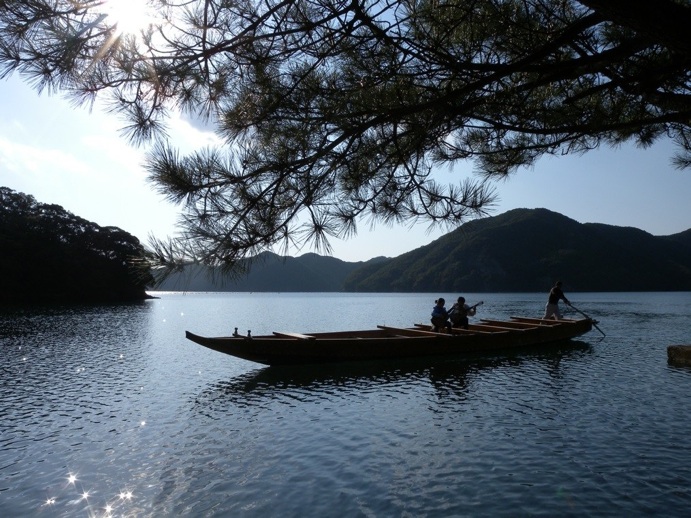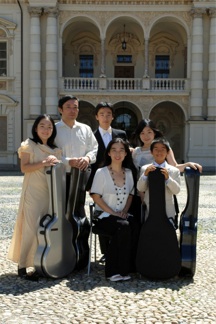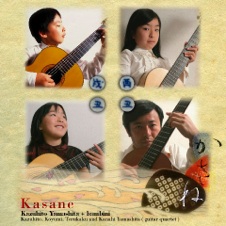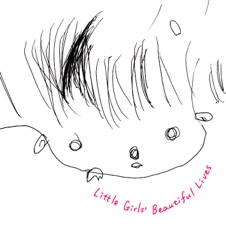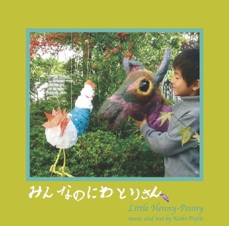Copyright © 2011 brinrinri All Rights Reserved
Interview (Classical Guitar Magazine )
<YouTube>



ⓒ photo by veronica rasera
<Little Henny Penny Finds Love>
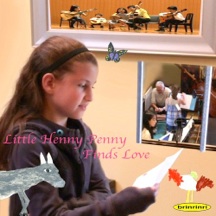
Tori,
Gary Karr
and
Kazuhito Yamashita Family Guitar Quintet
<3CDs>
This quartet looks to the risorgimento of a quintessential and older musical tradition. This recalls a bygone era of both Europe and Japan when such music was known and valued and whose echoes can still be heard in the classic 11th century novel "The Tale of Genji."
"KASANE" is the quartet's main repertoire and typifies the music of the age. Four guitars, multi-layering with shifting tonal colors, represent the various plucked stringed instruments of old Japan.
There are 3CDs released and they have been performed in Italy, Spain, Portugal, Korea, Vietnam, Singapore, U.S.A. and Japan.
I am sure in few years the people will start to understand what this music means.
So sensitive.
Like I hope this planet and everything what breath and grows is getting like that.
-- Pavel Steidl


Welcome to ‘Kazuhito Yamashita + bambini’
have been renamed
‘ Kazuhito Yamashita Family Quintet ’
The Magnificat of our Home
In the vocabulary of ancient Japan, iyashirochi or kekarechi served to describe the conditions of a particular ‘place’. Shinto shrines were erected on iyashirochi: chi indicating ‘ground’ and iyashiro possessing the same origin as the contemporary iyashi, ‘healing’. The concept of healing originally embraced the sense of tranquility of emotion coupled with the absence of pain. Thus, iyashi responded not merely to disease and injury but also to the refreshment of body and mind.
The quotidian search for iyashi takes many forms: from painting to hot springs, from the reading of sacred scripture to pets and sport. Let us here consider iyashi through the prism of music and its appreciation.
Adherents of the Pythagorean School were said to relieve their daily stress by turning to special odes and song before sleep. Likewise, in waking hours, they would nullify life’s oppression by song and its healing power. In myth, music conquers evil. Music transforms the heart of the wicked and brings forth the bounty of the land.
The structure of music corresponds to the structure of biological organisms –their development and pattern - as in snow, ice the buds of plants, the horns of ox and sheep, each following a pattern of spiral growth. This is an unknown area for me I want to describe music’s recuperative power which in my home.
As a person much given to nostalgia for the ‘good old days’ and also because my husband and I are musicians, we naturally nurture ideas about the musical education of children: both knowledge and technique. This comprises a core element of the person’s liberal education and, moreover, is a desirable practice to be performed at home when children are young. Teaching one’s own children is not an easy task. On the other hand, it is a unique opportunity; children are unfettered by goals such as going to music school or winning competitions. We enjoy music in the home. My husband teaches the guitar. He is guitarist. I can teach the piano and my sister or another teaches the violin. However, these western musical instruments demand considerable time to master. Until we achieve a certain level, there is undoubted stress both in teaching and learning. Thus, arises the necessity of another means to heal such stress. The higher the level of musical knowledge and technique the more music can be enjoyed. Unequivocally true but this is not the whole picture. Were all those denizens of the Pythagorean School superlative performers? Was the typical Confucian a virtuoso of the Koto? Did Heian aristocrats daily labour over their instruments for the five of six hours that modern pianists do? Perhaps not. However, they must have felt at home with their music. The situation and historical environment is undoubtedly different. Although instruments East and West have altered shape along with the changing musical environment of music the essential forms have remained intact
In the volume Wakana-no-ge (Spring Shoots II) in ‘The Tale of Genji’ the main character, Hikaru Genji, holds a private family concert in his home. Onna Sannomiya, Genji's new and youngest wife, has just started to learn the Koto but she plays beautifully to the music of the other Koto played by Genji’s other wives and daughter (the Kiritsubo consort). One of the wives, Akashi-no-Kimi, in particular excelled on the Biwa (Japanese lute). These noble ladies were not permitted to meet to rehearse. Therefore, each performance was, for them, an inevitable experience of a first, joint and on-the-spot event. Though unprepared in a modern sense this performance bears a great significance for the story. This scene highlights Hikaru's pride and satisfaction in himself more than any other scene in the story. Hikaru's life reaches a summit, at this juncture, and then proceeds downhill. This musical scene is his life’s last glittering jewel. Perhaps we need to ponder on the essence of music played here.
I myself have sought a style of composition to encompass beginners of two or three years as well as professional players: to facilitate four or five people to play in concert. My recent work, Kasane, has employed this idea for guitar quartet. The reason why I chose guitar reflects my interest in various guitars, of different shapes and sound, which we recently collected. Kasane became, indeed, a source of healing in our home – a veritable Magnificat.


KazuhitoYamashita Family Quintet
Kazuhito Yamashita is widely recognized as one of the world's premier virtuoso guitarists. His dazzling technique and powerful expression has received accolades throughout the musical world. With an impressive list of almost 80 recordings and numerous original arrangements of such works as Mussorgsky's Pictures at an Exhibition, Dvorak’s New World Symphony etc., Yamashita is a living legend.
In 2004 "Kazuhito Yamashita+bambini" was founded by Kazuhito, his two daughters, Koyumi and Kanahi, and elder son, Terukaku, for the risorgimento of a quintessential and older musical tradition (This recalls a bygone era of both the East and the West when such music was known and valued and whose echoes can still be heard in the classic 11th century novel "The Tale of Genji." ) by performing original pieces written for them by Keiko Fujiie, based on her Oriental view of the world. Since 2010, their younger son, Namifu, joined them and they were renamed "Kazuhito Yamashita Family Quintet".
They have played in many times in Italy, Portugal, US, Japan, Korea, Vietnam, Singapore, Ireland, Czech, Hungary, also appeared in the Cordoba Festival in 2007 and 2011.
